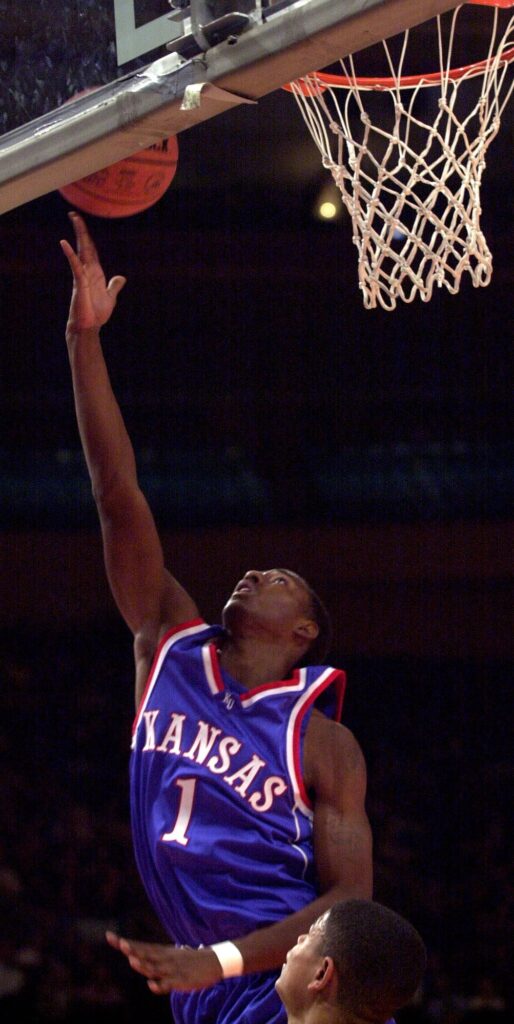
Use whatever advantages you can to create the best possible output. Be so good at navigating constraints that others think you are breaking the rules.
In college I was a photographer for the school paper, the University Daily Kansan. I loved photography and saw the journalism gig as a great way to get better. I started out doing speaker and podium shots. If someone was giving a talk on campus then I was usually there, getting a photo. It was actually a fabulous exercise. Sure, you could take the same boring shot dozens of times a month and get the job done. Alternatively, you could use it as an exercise to get creative. I tried to do the latter.
Over time I got to be a better photographer and I earned trust with the photo editors. My next evolution was sports, covering the football team (KU wasn’t known for great football) and occasionally covering basketball. To say that it was a treat to sit on the court covering a game at Allen Fieldhouse is putting it mildly…
In November of 2000 a huge gig came up. The paper was sending two reporters and one photographer to New York to cover the Coaches vs Cancer Classic basketball event (now called the Empire Classic). I got tapped to go since I had taken the time to learn the new Nikon digital camera system and could send photos back for publication same-day. I hopped on the plane with the reporters and got to sit on the court at Madison Square Garden to shoot the Jayhawks playing UCLA and St John’s.
The lighting conditions weren’t great at the venue. The professional photographers that surrounded me all had powerful strobe flashes linked in the ceiling to get the light they needed. The strobes provided enough light to freeze the action, making basketball shots easy. All I had was an ƒ2.8 70-700mm lens to get the job done. I had other tricks up my sleeve though. First, I knew how far I could push the ISO of the camera without getting too much noise, meaning that I could get good light sensitivity (and faster shutter speeds). I also had shooting techniques that helped, like following a moving target through the longer exposure to help keep the player centered on the sensor. This reduced blur. In the end, I got some decent shots that went onto the front page of the Kansan as the basketball team won the event championship.
When I got back to Kansas my photo editor called me into his office. “Hey, nice work on the Coaches vs Cancer event. That went really well. By the way, did you heavily Photoshop any of your photos? The photo editor at another paper says they look way over-edited.”
I was shocked. Event photography is all about capturing the moment as it happened. Here I was, being accused of bending reality. With a bit of anxiety I went to the nearest workstation and showed my editor the workflow from the raw image. First, crop the shot. Next, adjust the exposure curve with one click. Finally, sharpen the image and ship it.
My editor was satisfied with that. I head rumors that he called the other editor up and said he was full of it. Ultimately, the reason my photo was better was exactly because of my disadvantages.
When strobes fire they tend to illuminate everything in the arena, including the audience/background. The strobes are somewhat directional, but with that much light bouncing around there is a lot of spill and reflection. By using the ambient lighting focused on the court, it made the background darker and the players pop out more. No strobes led to more contrast, which led to a better photo.
With the benefit of hindsight, it was a tremendous compliment to be called a faker. I was able to make the most of my situation to deliver something that was at least on the level of full-time professionals. I think we should all aspire to something similar in our own work. Every day we run headlong into constraints and limitations. What you do with those constraints makes all the difference in the end. Try to leverage them into something so good people doubt you did it fairly.
Photo: Mario Kinsey with the ball at Madison Square Garden during the Coaches vs Cancer Classic in November 2000. I had to dig through my archives to find this one. I don’t know if it is the same photo that was published, but it was the same event.